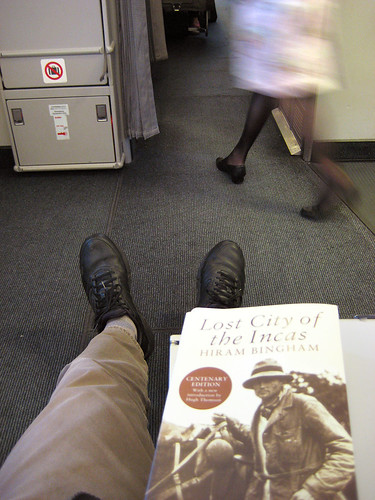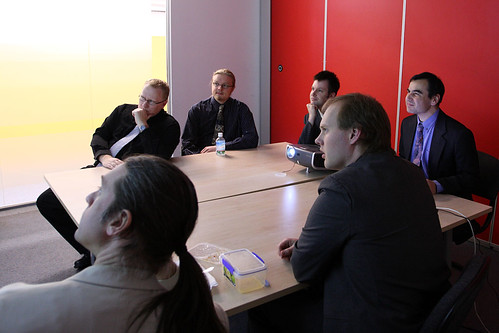

| Archive Blog Cast Forum RSS Books! Poll Results About Search Fan Art Podcast More Stuff Random |
|
Classic comic reruns every day
|
1 {photo of feet next to an inscription of text}
1 Caption: Footnotes
|
First (1) | Previous (3322) | Next (3324) || Latest Rerun (2816) |
Latest New (5380) First 5 | Previous 5 | Next 5 | Latest 5 Annotations theme: First | Previous | Next | Latest || First 5 | Previous 5 | Next 5 | Latest 5 This strip's permanent URL: http://www.irregularwebcomic.net/3323.html
Annotations off: turn on
Annotations on: turn off
|
 Book and foot (×4). |
Some publications place the text of footnotes at the bottom[5] of the page on which they are referenced. Other publications collect all of the footnotes for a chapter and stick them all at the end of the chapter, while others collect them for the entire book and stick them all at the end of the book (in which case they may instead be called endnotes). Personally, I much prefer footnotes at the bottom of the page, because this makes it much easier to refer to the note quickly and see if it is something you want to read while you're in the right context. Footnotes/Endnotes at the end of a chapter or book force you to constantly flip back and forth between pages to see if you might be missing something important or interesting.
[2] The word "are" is used here as the third person plural present tense inflection of the English verb "be". "Are" also functions as the first and second person plural present tense inflections: "we are" (first person), "you are" (second person), and "they are" (third person); as well as the second person singular inflection: "you are". This may be easier to show in a table:
 I am in Sydney. |
| Person | Singular | Plural |
|---|---|---|
| First | I am | We are |
| Second | You are | You are |
| Third | He/She/It is | They are |
The verb "to be" is the most irregular verb in the English language. Most verbs follow the incredibly simple regular pattern, for example, "to walk":
| Person | Singular | Plural |
|---|---|---|
| First | I walk | We walk |
| Second | You walk | You walk |
| Third | He/She/It walks | They walk |
The verb "to be" is also the most common verb in the English language. It is what's called a copula, which is a kind of sentence binding word that is used in many cases as a sort of neutral syntactic glue when no other verb quickly comes to mind. (Notice that "is", the third person singular version of "to be", is used four times in the previous sentence alone.)
This usage as a copula annoys some people so much that they have proposed or used a version of English which eschews the verb "to be" (and all its inflections) altogether. For example, the sentence in the above paragraph ("It's what's called a copula...") with four uses of "is" in it could be rewritten as follows:
It plays the part of a copula, a syntactic element defined by the property of binding sentences together like a sort of syntactic glue when no other verb quickly comes to mind.
 We are in a business meeting. |
Proponents of this way of writing have dubbed this variant E-Prime. They argue that forcing the writer to think about how to eliminate the copula makes the resulting sentences more informative and less open to incorrect or ambiguous interpretation. You may be surprised to learn that several well known authors advocate E-Prime, and have released significant works written in this restricted form of English. Examples include the novels Under The Eye of God and A Covenant of Justice by science fiction author David Gerrold.
Although the inflections of the verb "to be" make it the verb with the most different forms in English, it pales next to some other common languages. For example, the equivalent verb "essere" in Italian (which means pretty much the same thing and tops the list of that language's most common verbs) inflects as follows:
| Person | Singular | Plural |
|---|---|---|
| First | Io sono (I am) | Noi siamo (We are) |
| Second | Tu sei (You are) | Voi siete (You are) |
| Third | Lui/Lei è (He/She is)[6] | Loro sono (They are) |
 Also very cool. |
[3] "Cool" is used here as an adjective describing something which is admired because of its interestingness, unusualness, aesthetic value, ethical value, or social cachet in the eyes of the person so describing it. The word is probably (I estimate) used more in this sense these days than in its original meaning of "slightly cold".
Some things which are cool: the Fonz, science fiction, roller coasters, webcomics, driving responsibly, that style of music you like, Dame Jane Goodall, bow ties.[7]
[4] Some people[8] really like these.
[5] Or "foot".
[6] Italian does not have a gender-neutral pronoun equivalent to "it" in English. Everything is (grammatically) either masculine or feminine.
[7] And another thing, of course, that is cool, are footnotes.
[9] And Mark Dunn, who, as pointed out by reader Andrew K., wrote an entire novel composed solely of footnotes (technically endnotes).
|
LEGO® is a registered trademark of the LEGO Group of companies,
which does not sponsor, authorise, or endorse this site. This material is presented in accordance with the LEGO® Fair Play Guidelines. |